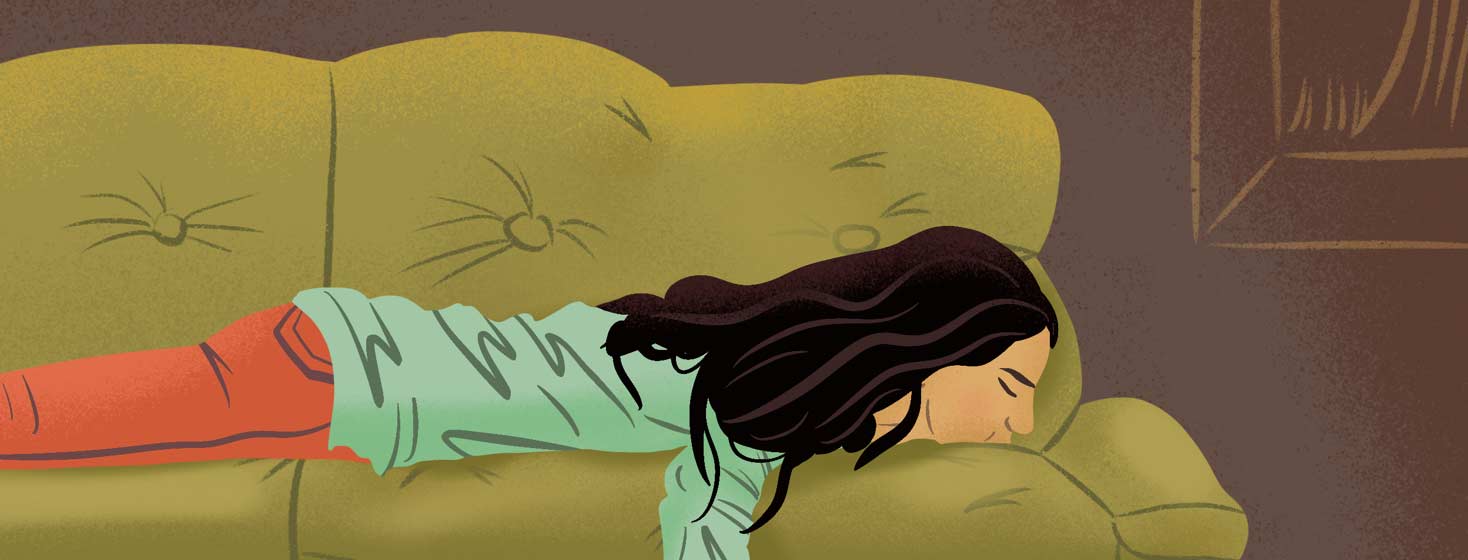The Crushing Weight of Fatigue with AS
Of all the ankylosing spondylitis and fibromyalgia symptoms I experience daily, fatigue is one of the worst. For me, coping with ankylosing spondylitis fatigue is just as bad as the chronic pain.
No amount of sleep feels like enough
I’m just always so tired. In addition to default levels of tiredness that never go away, the slightest bit of exertion will make me even more tired. Just getting up to go to the washroom can wear me out.
Some days the fatigue will come out of nowhere. I’ll have low to average energy levels for most of the day, and the smallest activity will set it off. I never really have high energy days anymore. I think that low energy is my new norm, and that’s okay.
Something as simple as taking a couple of steps could cause the fatigue to sink in and weigh me down. And I mean that literally. Fatigue feels heavy. It feels like a weight I never wanted to carry. Every part of my body feels like it weighs 20 pounds, and I have to lift all that weight just to move slightly.
Featured Forum
View all responsesMobility aids help me manage fatigue
While using a cane or walker does prevent pain and flare-ups, they help me most with managing fatigue. By putting my weight on the cane or the walker, the heavy weight of fatigue is reduced to a manageable level. The cane or walker shares the weight of my fatigue with me and helps me move around without getting completely exhausted.
Whether I opt to use a cane or walker depends on how tiring an activity is for me. When walking around my house, I use a cane since I can sit whenever I need to and don’t have to walk for too long. But if I am going shopping, I take my walker since it involves walking around for a longer time and distance.
I tried taking magnesium supplements
I talked to my pain management doctor about coping with ankylosing spondylitis fatigue, asking him what would help. He told me to take magnesium supplements because they would help me get better sleep and increase my energy. From what I understood, he said that a lack of restful sleep is common in patients with chronic pain and fatigue, so getting more sleep would also help improve those issues.
I know that getting adequate sleep regularly has many health benefits, so I decided to give it a try. I started taking magnesium supplements twice a day for a total of 1000 mg.
In all honesty, I’m not sure if the supplements on their own have helped much with energy. Though, I do feel like it has helped with sleep a bit. I always had trouble falling asleep, so this helped me get to sleep a bit faster. However, I don’t feel like the supplements have improved my quality of sleep. I still felt just as tired as I did before I started taking magnesium.
When I told my doctor this, he said to keep taking them because it might help over time or in conjunction with other treatments. So, I still take the supplements, and my fatigue has improved a bit while experimenting with other treatments as well.
Still searching for ways to cope with fatigue
Things are starting to look up. We’ve finally been able to significantly reduce my pain—temporarily, but welcome nonetheless. However, these only address pain.
Over the years, I’ve asked numerous doctors how to cope with the ankylosing spondylitis fatigue, and they’ve all told me the same thing: there is no treatment for fatigue. One can try to make lifestyle changes and take supplements that might help with fatigue, but there is no specific treatment for it.
I am grateful that something is finally helping my pain, but these conditions feel multi-pronged to me, spearheaded by pain and fatigue. I often wish there was something that helped improve fatigue.
Do you struggle with fatigue? What has helped you cope with it?

Join the conversation